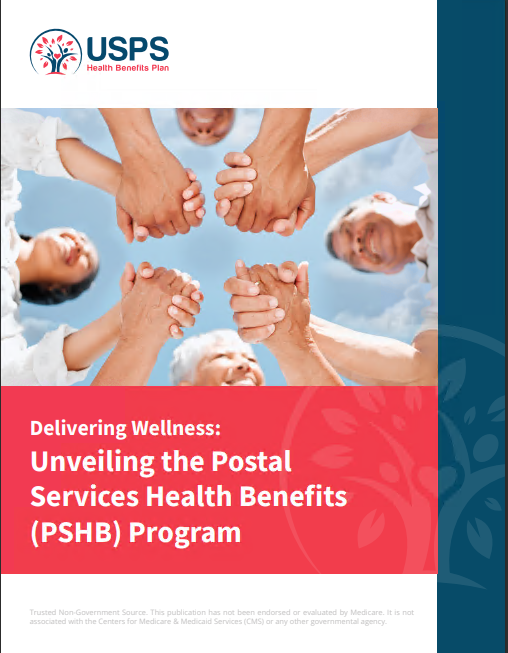Key Takeaways
-
Understanding coinsurance costs is essential for making informed decisions about your PSHB plan and maximizing the value of your benefits.
-
Comparing plan options carefully can help you save on out-of-pocket expenses while ensuring you receive the care you need.
Why Coinsurance Matters for PSHB Plans
When navigating Postal Service Health Benefits (PSHB) plans, you might notice that coinsurance plays a significant role in determining your out-of-pocket costs. Unlike copayments, which are fixed amounts, coinsurance is a percentage of the cost of medical services or prescriptions that you’re responsible for paying after meeting your deductible. Understanding how coinsurance works can help you compare plan options and choose one that aligns with your healthcare needs and budget.
What Exactly Is Coinsurance?
Coinsurance is the portion of your medical expenses that you pay after reaching your plan’s deductible. For example, if your plan has a 20% coinsurance rate, you’ll pay 20% of the cost for covered services, while your insurance covers the remaining 80%.
Here are some key terms to know:
-
Deductible: The amount you must pay out of pocket before coinsurance kicks in.
-
Out-of-Pocket Maximum: The limit on the total amount you’ll pay for covered services in a plan year, after which your insurance pays 100%.
-
In-Network vs. Out-of-Network: Services provided by in-network healthcare providers typically have lower coinsurance rates than those offered by out-of-network providers.
Understanding these elements can give you a clearer picture of how much you’ll owe when accessing healthcare services.
How Coinsurance Affects Your Total Healthcare Costs
Coinsurance rates vary among PSHB plans and significantly impact your overall costs. Lower coinsurance rates may seem appealing, but they often come with higher premiums. On the other hand, plans with higher coinsurance rates may have lower monthly premiums but could result in higher out-of-pocket expenses if you require frequent medical care.
When comparing plans, consider these factors:
-
Frequency of Care: If you anticipate needing regular medical care, a plan with a lower coinsurance rate may save you money over time.
-
Type of Services: Some plans have different coinsurance rates for specific services, like hospital stays or specialist visits.
-
Annual Out-of-Pocket Maximum: Plans with higher out-of-pocket maximums may expose you to higher costs, even if the coinsurance rate seems reasonable.
Comparing PSHB Coinsurance Options
Step 1: Review Plan Summaries
Start by reviewing the plan’s summary of benefits. This document outlines the coinsurance rates, deductibles, and out-of-pocket maximums. Look for any differences in costs between in-network and out-of-network providers.
Step 2: Calculate Potential Expenses
Estimate your potential annual healthcare costs based on your expected medical needs. Factor in:
-
The plan’s deductible
-
Coinsurance rates for services you’re likely to use
-
The annual out-of-pocket maximum
Step 3: Evaluate Networks
In-network providers usually cost less than out-of-network providers. Check whether your preferred doctors and facilities are included in the plan’s network. Using out-of-network providers can lead to significantly higher coinsurance rates or even full responsibility for costs.
Step 4: Consider Prescription Drug Costs
Some plans have separate coinsurance rates for prescription drugs. Check if your medications are on the plan’s formulary and whether they’re categorized as generic, preferred brand, or specialty drugs. The coinsurance rate can vary depending on the drug’s tier.
Strategies to Minimize Coinsurance Costs
Maximize In-Network Benefits
Sticking to in-network providers can help you reduce coinsurance costs. Most plans have negotiated lower rates with these providers, making them a cost-effective choice for routine and specialized care.
Plan for Preventive Care
Many PSHB plans cover preventive services, such as annual checkups and screenings, at no additional cost to you. Take advantage of these benefits to maintain your health and potentially avoid higher medical expenses down the line.
Monitor Your Spending
Keep track of your healthcare expenses throughout the year. If you’re close to reaching your out-of-pocket maximum, consider scheduling necessary procedures or treatments before the end of the plan year to minimize additional costs.
Use Flexible Spending Accounts (FSAs)
If you’re eligible, contribute to an FSA to set aside pre-tax dollars for healthcare expenses. These funds can be used to cover coinsurance payments, reducing the financial burden.
Understanding the Role of Deductibles and Out-of-Pocket Maximums
Deductibles and out-of-pocket maximums are key components of your PSHB plan. Here’s how they work in relation to coinsurance:
-
Before Meeting the Deductible: You pay 100% of your medical costs for most services until you meet the deductible.
-
After Meeting the Deductible: Coinsurance applies, and you’ll share costs with your insurance plan.
-
After Reaching the Out-of-Pocket Maximum: Your insurance covers 100% of covered services for the remainder of the year.
Understanding these thresholds can help you budget for healthcare expenses and determine when coinsurance costs will come into play.
Common Coinsurance Scenarios in PSHB Plans
Routine Doctor Visits
For routine visits, you might pay a small copayment or a percentage of the visit cost, depending on your plan’s structure. Preventive visits are often covered at 100%, meaning no coinsurance applies.
Specialist Appointments
Specialist visits often come with higher coinsurance rates. Check your plan’s summary of benefits to see the exact percentage and determine if a referral is required to reduce costs.
Emergency Care
Emergency room visits typically have higher coinsurance rates than urgent care visits. If possible, consider visiting an urgent care center for non-life-threatening issues to save on costs.
Hospital Stays
Coinsurance for hospital stays can vary widely among plans. Some plans offer a flat rate per day, while others charge a percentage of the total cost. Be sure to review your plan’s specifics to avoid surprises.
Timing Your Healthcare Expenses
Healthcare costs can fluctuate throughout the year based on how much of your deductible and out-of-pocket maximum you’ve met. Use this timeline to plan your expenses:
-
Early in the Year: You’ll likely pay more out of pocket until you meet your deductible. Schedule preventive care, which is usually covered at 100%.
-
Mid-Year: If you’ve met your deductible but not your out-of-pocket maximum, coinsurance costs will apply. This is a good time to plan non-urgent medical procedures.
-
Late in the Year: If you’ve reached your out-of-pocket maximum, take advantage of fully covered services before the plan resets in January.
Tips for Choosing the Right PSHB Plan
Assess Your Medical Needs
Consider your health history and anticipated medical expenses. If you expect frequent doctor visits or prescription drug use, a plan with lower coinsurance rates and higher premiums might be a better fit.
Compare Multiple Plans
Don’t settle for the first plan you review. Compare at least three options to identify one that balances premiums, deductibles, and coinsurance rates effectively.
Evaluate Plan Flexibility
Check if the plan offers flexibility in choosing providers, including specialists and out-of-network care. More flexibility often comes with higher coinsurance rates, so weigh the trade-offs carefully.
Review Supplemental Benefits
Many PSHB plans offer supplemental benefits, such as dental, vision, and wellness programs. While these don’t directly impact coinsurance, they can add value to your overall plan.
Making the Most of Your PSHB Plan
To get the best value from your PSHB plan, take a proactive approach:
-
Stay Informed: Regularly review your plan’s benefits and any updates.
-
Ask Questions: Contact your plan’s customer service for clarification on coinsurance rates and covered services.
-
Use Available Resources: Many PSHB plans offer tools like cost calculators to help you estimate expenses.
-
Keep Records: Maintain a log of your medical expenses and insurance claims to track your progress toward meeting your deductible and out-of-pocket maximum.
Get the Best Value from PSHB Coinsurance Options
Understanding coinsurance costs is crucial for choosing the right PSHB plan and managing your healthcare expenses effectively. By comparing options, estimating potential costs, and taking advantage of in-network providers and preventive care, you can minimize out-of-pocket expenses and get the most value from your plan. Remember to revisit your plan annually during Open Season to ensure it continues to meet your needs.










